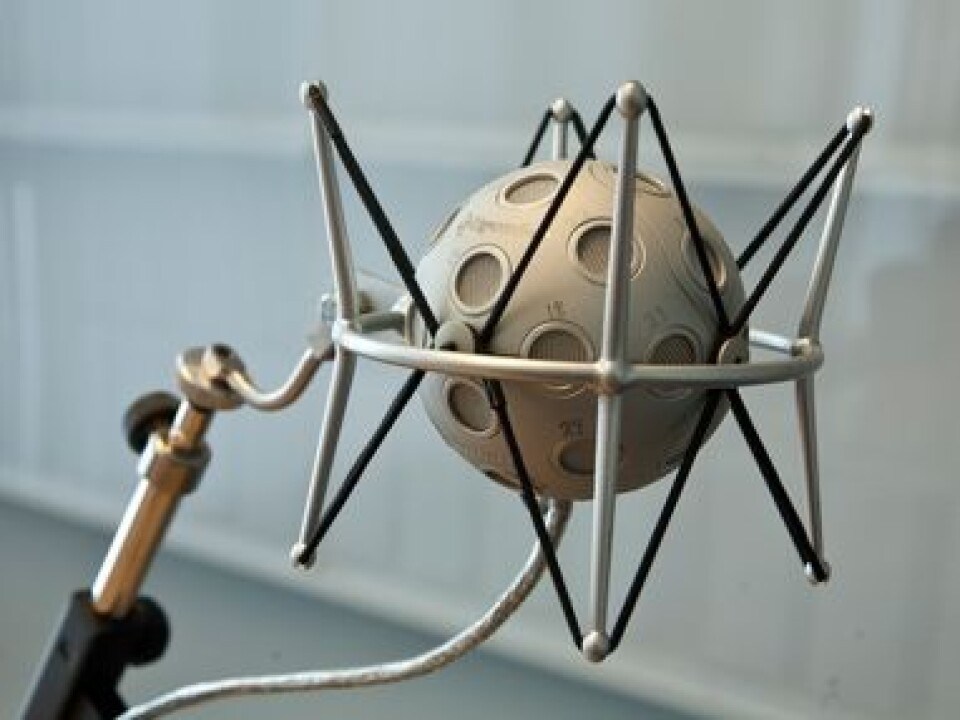This article was produced and financed by The Research Council of Norway

Video conferencing with improved sound
Increasingly, companies are using video conferencing to save time and money. Less travel is also beneficial to the environment. Now the sound quality can be improved.
Denne artikkelen er over ti år gammel og kan inneholde utdatert informasjon.
Sound quality has proved to be the most difficult aspect to perfect when it comes to making video conferencing a positive experience for participants.
“Video conferences pose unique challenges because the sound quality is affected by the acoustics of two rooms. Reverberation within both conference rooms as well as noise captured by the microphones lead to poor sound quality for listeners on the other end,” says Professor Peter Svensson of the Norwegian University of Science and Technology (NTNU) in Trondheim.
No good guidelines currently exist for how to construct video conference rooms.
“We understand the acoustic characteristics needed to ensure good sound in many types of rooms such as classrooms and auditoriums,” says Svensson. “But we haven’t had that same knowledge with regard to video conference rooms.”
Standards coming

In collaboration with multinational communications giant Cisco, Svensson’s project team of acoustics researchers has determined what it takes to create optimal sound conditions in a video conference room.
Now they are working to establish Norwegian as well as international standards and recommendations for video conference factors such as echo times and background noise. Thus, many stand to benefit from their research findings.
A video conference room has three simultaneous roles to fulfill: as a recording room, meeting room and listening room. To be acoustically optimal, a video conference room has to perform all three of these roles well.
The aim is for video conference participants to feel they are in a meeting room with good acoustics and not feel distracted by ambient noise such as whispering or the rustling of papers.
To capture voice, but not noise

One focus of research has been on the essential properties of a video conference microphone.
“Ideally, each person would use a headset telephone with a microphone near the mouth. But people don’t want to use such microphones, so we need to find other solutions,” explains Svensson.
His team has devoted particular attention to the directional properties of microphones, i.e. how sensitive they are in terms of placement relative to the person speaking.
“If the room is properly equipped and designed,” continues Svensson, “it shouldn’t be necessary to think about where to stand in relation to the microphone for good sound.”
Many systems in use today have simple microphones with little directional sensitivity. These microphones capture sounds from all directions, which has the advantage of picking up a person’s voice from any point in the room.
The disadvantage of such microphones is that they do not adequately suppress ambient noise. Some other systems employ more direction-sensitive microphones; but there are compromises involved in that choice as well.
A better microphone
“Obviously, it would be best to use microphones that combine the properties of the two types, capturing the sound of the person speaking but not too much background noise,” says Svensson.
His team has been working on a new type of microphone, spherical in shape and comprised of 32 microphone elements. An algorithm they developed to optimise this microphone’s directional sensitivity has attracted wide international attention.
The algorithm combines the signals from the 32 microphone elements in the theoretically best way so as to pick up the sound desired and suppress all other sounds.
Thorough testing
The research team created a model for calculating acoustic values for a video conference set-up in order to choose the right directional sensitivity for the microphone in a given room.
The model takes into account a room’s attributes such as its volume, echo time, and distance between the microphone and the person speaking as well as between the listener and the speaker device.
“Testing shows that our model reflects the real world. Among our findings is that the echo times of the two rooms play a major role in overall sound quality,” says Svensson.
Room design is essential
“Echo time is dependent on the amount of sound-absorbing materials in the room. A room with hard surfaces everywhere results in far too much echo. But a room that completely muffles sounds is not ideal either.”
When setting up a video conference room, consideration must be given to whether there are sound-reflective surfaces near the microphones and speaker devices, whether there are sources of noise such as video projectors, and how well the room is sound-insulated from adjoining rooms. All these factors must be accounted for in order to achieve good acoustic quality with little background noise.
A successful video conference requires optimal conditions in both rooms being used.
“Everyone involved will have trouble even if only one of the parties is using an unsuitable video conference room,” stresses Svensson.
Many application areas
The researchers have patented the algorithm they developed for fine-tuning the directional sensitivity of the spherical microphone. Now, with funding from the Research Programme on Commercialising R&D Results (FORNY2020) at the Research Council of Norway, the group is working to find other areas to apply their algorithm commercially.
“We are testing our algorithm by applying it in both noise analysis for developing industrial products and in connection with noise measurements in situations with many sources of noise,” explains Svensson.
One application for the algorithm is in the automotive industry, for designing quieter vehicles.
Translated by: Darren McKellep og Carol B. Eckmann






























